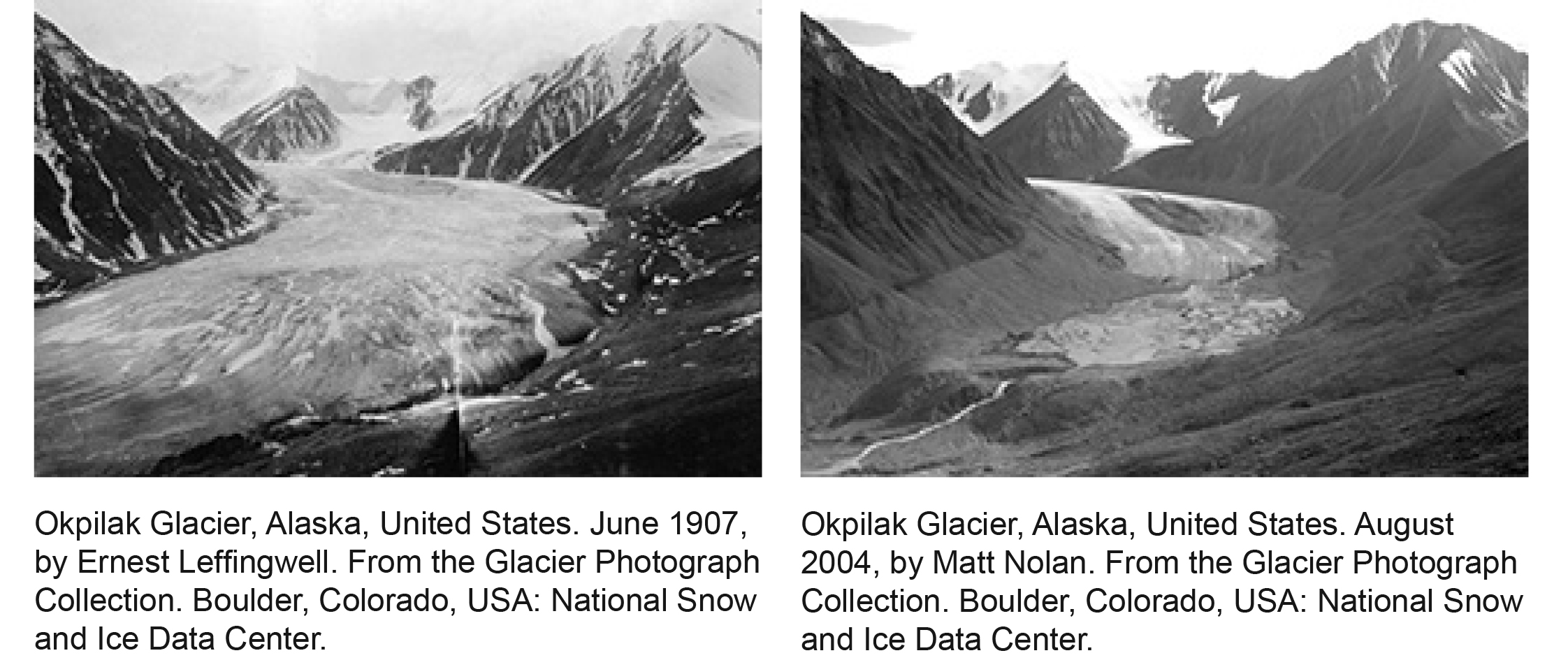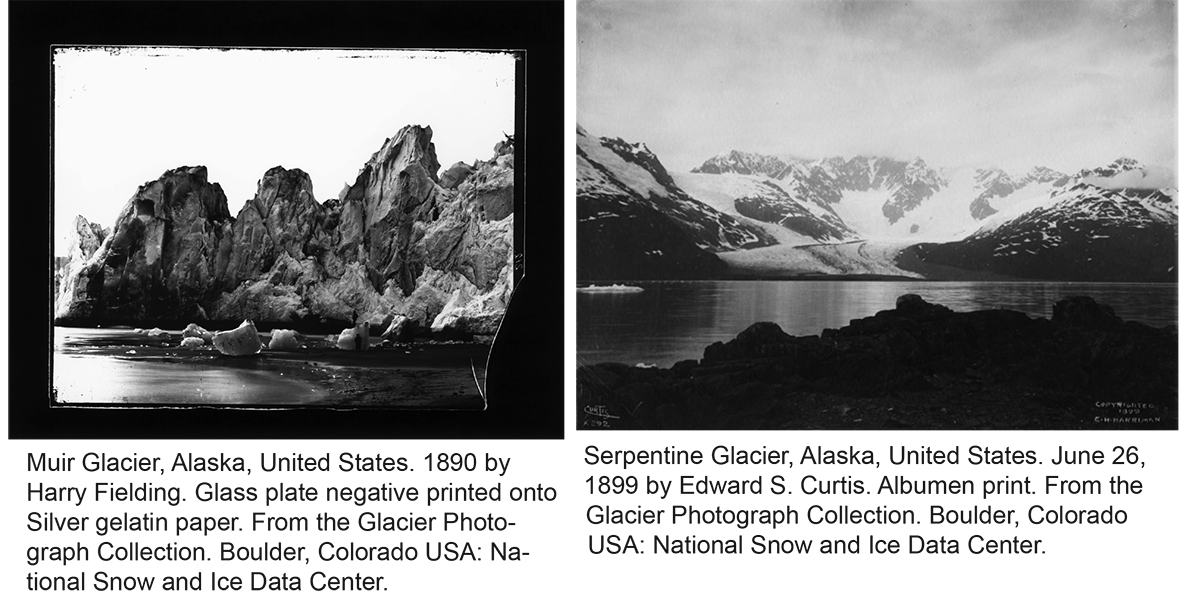By Athea Merredyth
The 2016 Fall Meeting of the American Geophysical Union may forever be remembered for the passionate remarks delivered by California governor Jerry Brown. Governor Brown spoke, in part, about the need for scientific data to be collected and preserved, and its importance in understanding climate change. Later that week at the same meeting, our CLIR-funded digitization project received the International Data Rescue Award in the Geosciences. We were happy to be a part of this meeting and contribute to the efforts in preserving valuable scientific data.
The study of glaciers, in the field and on film, gives us valuable information about their behavior and how they respond to climate change. Photographs of a glacier taken over the course of time can help us piece together the glacier’s story and its landscape. Observations that were not apparent at the time a photograph was taken can be made at a later date. Because photography offers us a view back to the later nineteenth century, it allows us to create an accurate record of how landscapes appeared and have transformed between then and now, which can inform us of how they may change in the future.
The National Snow and Ice Data Center (NSIDC) at the University of Colorado Boulder (CU) is responsible for managing, archiving, and disseminating cryospheric and polar data. The NSIDC houses a collection of historical archival photographs that record the earth’s glaciated regions prior to modern data gathering methods. This collection is composed of repeat photographs of the same glacier, taken from the same vantage point and at the same time of year, but taken many years apart.

With funding from CLIR, NSIDC and the CU Boulder Libraries are digitizing the entirety of the archive’s print glacier photograph collection. We intend to provide digital images and associated metadata in two digital platforms—one of which is co-discoverable with born-digital cryospheric data, the other of which is co-discoverable with collections more likely to reach humanists and social scientists. The intent is to help create a more comprehensive access and preservation model for providing analog data in glaciological and related scientific research.
The collection is a map of photographic history, showcasing the evolution of negative and printing processes during the late 19th century and 20th century. Included are some beautiful albumen prints, a printing process that was prevalent until the late 1890s, as well as glass plate negatives made using the collodion process. This process gives a high resolution of detail in the highlights and shadows, making for exquisite black and white prints. The collection also includes color slides, satellite images, and digital photographs taken in the decades since, highlighting the range of photographic processes over the last 150 years. Many of the physical photographs are fragile, so digitizing the prints ensures their longevity.

In all of their photographs, the scientists who committed to documenting glacial changes fused personal inquiry with scientific exploration. Their work became personal without obstructing their view of the subject they explored. This can be seen in the aesthetic and artistic vision of images from William O. Field and Lawrence Martin, or the photographs taken by Edward S. Curtis and Ashael Curtis during the Harriman Expedition of Alaska in 1899. Yet, the artistic interest of these photographs does not dilute their historical or scientific value.
Beyond preserving the photographic print, digitizing the collection opens and enables future scientific discoveries related to climate change and helps tell the story of a warming planet to the public and policy makers. Modern geography and climate study proceeds by comparing old and new measurements. How different are our polar regions now, from, say, a hundred years ago? Without archives and historical collections our quest for data can only go back as far as the 1970s when digitally recorded data became the norm. The NSIDC’s archived records of the earliest observations reveal how unusual the past century’s changes are, and document the first stages of change. Digitizing these records gives access to reusable data that can prompt further investigation of environmental science.
Photographs, serving as a document, can galvanize social agency, and in contemporary conversations about climate change our archive is a reflection of urgency. This project is an opportunity to be involved in the larger scientific narrative of climate change, while creating an interactive conversation with our past.
For more information or to view photographs from the collection, please visit http://nsidc.org/data/glacier_photo/index.html
Principal Investigators from CU-Boulder include Walker Sampson lead P.I. and Assistant Professor & Digital Archivist at CU Boulder libraries, and Assistant Professor and Metadata Librarian Michael Dulock, Other contributors include:
- Florence Fetterer, sea-ice and data rescue expert at NOAA/NSIDC
- Allaina Wallace, former archivist at NSIDC and head librarian at the Denver Botanic Gardens
- Ruth Duerr, data scientist/systems engineer formerly of NSIDC, now at the Ronin Institute, and adjunct professor at the Graduate School of Library and Information Science, University of Illinois Urbana/Champaign
- Gloria Hicks, librarian at the Roger G. Barry Archives and Research Center (ARC) at NSIDC
- Jack Maness, Associate Dean for Scholarly Communication and Collections Services at University of Denver Libraries
- Athea Merredyth is the Project Archivist for the Glacier Photo Collection
Athea Merredyth is project archivist at the University of Colorado Boulder Libraries

